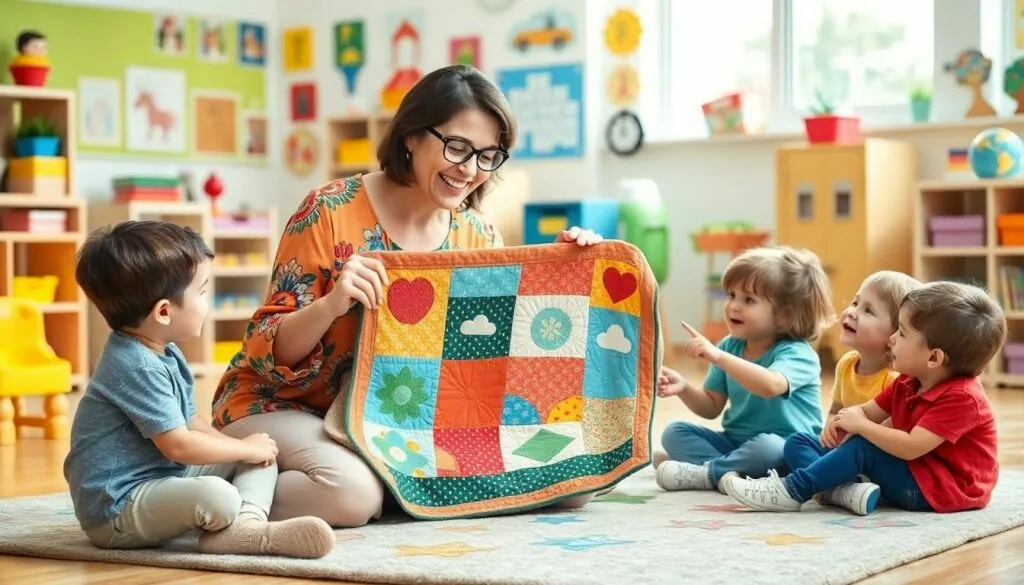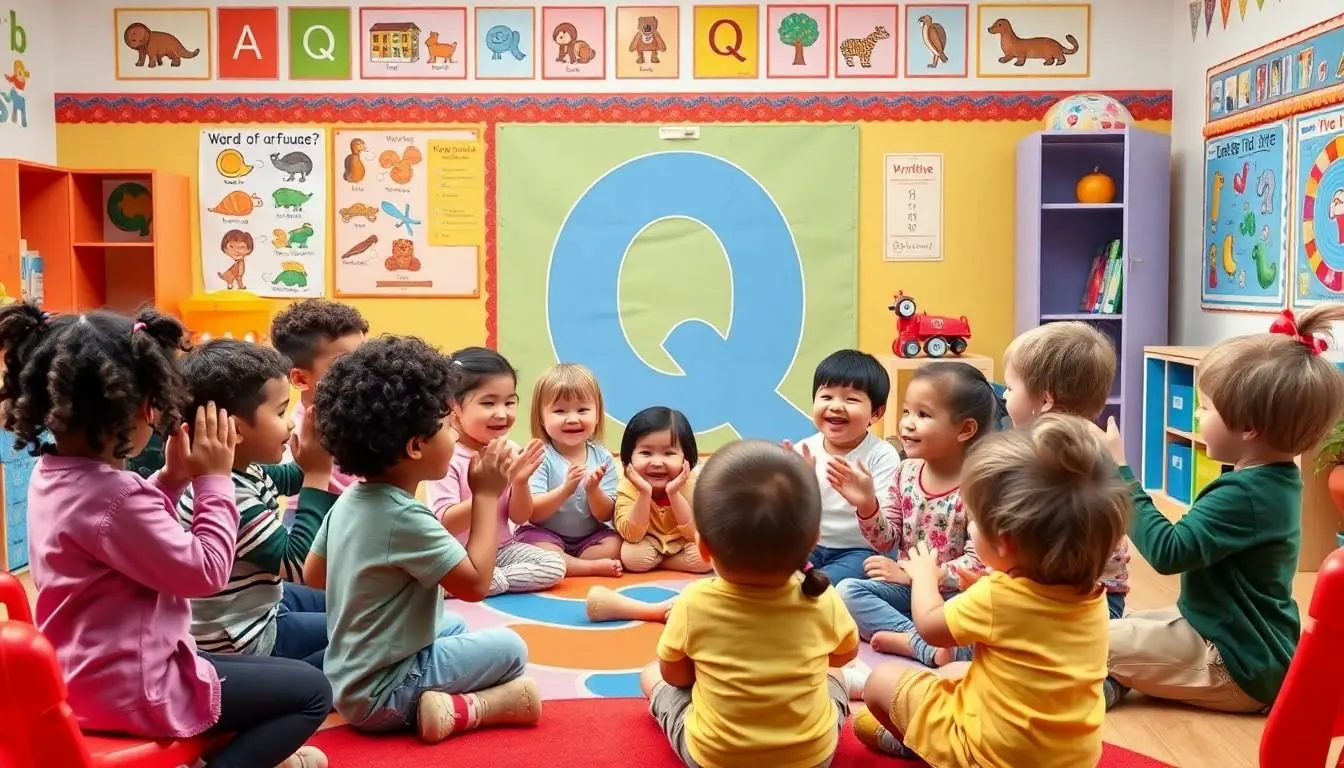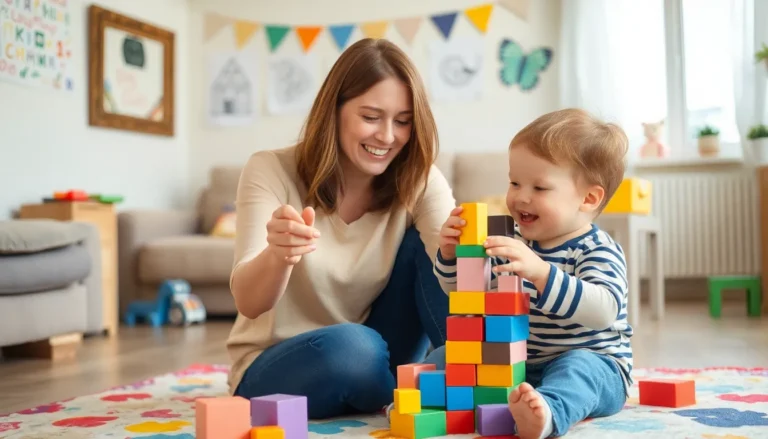Table of Contents
ToggleWhen it comes to teaching preschoolers, every letter of the alphabet brings its own quirky charm. But let’s be honest—Q can feel like that elusive unicorn hiding in the alphabet jungle. What’s a teacher or parent to do? Fear not! This article dives into the delightful world of things that start with Q, turning what seems like a challenge into a fun-filled adventure.
Understanding The Letter Q
The letter Q possesses distinct characteristics that set it apart from other letters in the alphabet. Generally, it appears in unique words, making it crucial for preschool learning. Engaging with Q helps children develop phonemic awareness while grasping its sound.
Several items start with Q that can captivate preschoolers. Examples include “queen,” “quilt,” and “quokka.” Integrating these words into activities creates fun learning experiences. During storytime, reading books featuring these words strengthens their understanding.
Q often pairs with U, forming the common combination QU. This combination sounds like ‘kw,’ which is a key concept for young learners. Highlighting this pairing encourages recognition of more complex words such as “quest” and “quick.”
Visual aids play a significant role in reinforcing the letter Q. Utilizing flashcards and colorful illustrations creates an engaging learning environment. Encouraging children to color pictures of items starting with Q further enhances their recognition and retention.
Activities centered around Q can include simple crafts and games. For instance, creating a crown can embody the theme of “queen.” Games such as scavenger hunts for Q-related items promote interaction and excitement.
Ultimately, instilling knowledge about the letter Q takes creativity. Diverse approaches keep preschoolers interested and help them form a strong foundation. Engaging with various Q-related words broadens their vocabulary and makes learning enjoyable.
Fun Facts About The Letter Q
The letter Q presents unique opportunities for learning. Preschoolers often enjoy discovering its distinct phonetic sounds and engaging usage in language.
Phonetic Sounds
Q typically pairs with U to create the ‘kw’ sound. Recognizing this sound helps preschoolers develop phonemic awareness. Some examples include “queen,” “quick,” and “quest.” Introducing these words through songs or rhymes enhances sound recognition. Utilizing educational activities like clapping syllables reinforces learning. Teachers can encourage children to repeat these sounds, solidifying their grasp of phonetics. Songs or games that emphasize the ‘kw’ sound also make learning playful.
Usage in Language
Words starting with Q enrich vocabulary in early childhood education. The letter Q is not frequently seen at the beginning of words, making it intriguing. Words such as “quilt,” “quokka,” and “quench” are excellent examples. Incorporating these words into daily conversations promotes language development. It’s beneficial to emphasize the diversity of language and encourage exploration. Engaging activities can include storytelling, art, or scavenger hunts centered around Q words. Exposure to this letter through various contexts fosters a deeper understanding.
Activities for Learning Q
Engaging preschoolers in activities centered around the letter Q enhances their learning experience. Creative crafts and interactive games capture their attention while reinforcing knowledge.
Creative Crafts
Crafts provide hands-on ways to explore the letter Q. Children can create a queen puppet using paper bags, markers, and glitter. Quilting showcases another option; they can assemble fabric squares to design a small quilt, introducing texture. Additionally, a quokka mask can inspire artistic expression with construction paper, scissors, and paints. Attaching these crafts to vocabulary enhances understanding of the words connected to Q. Each craft gives preschoolers a tangible representation of the letter, sparking their creativity.
Interactive Games
Interactive games promote an engaging way to learn about Q. A scavenger hunt focusing on items that start with Q stimulates curiosity. This game encourages children to seek out words like quilt and quick, reinforcing phonemic awareness. Alternatively, a “Q Bingo” game captivates attention; players can mark off pictures of Q-related items on their cards. Each encounter with these words builds confidence and vocabulary. Games that involve action, such as “Queen Says,” also boost auditory recognition through fun and physical activity. Integrating these games ensures preschoolers gain familiarity with the letter Q in an enjoyable manner.
Things That Start With Q for Preschool
Exploring words that start with Q enriches preschool learning experiences. Engaging preschoolers with these terms promotes phonemic awareness and vocabulary growth.
Common Objects
Common objects starting with Q offer relatable examples for preschoolers. Items like a “quilt” showcase familiar textures and colors. A “queen” figurine introduces imaginative play and storytelling opportunities. Preschoolers can spot “quarters” as they learn about money. Utilizing objects they encounter daily helps solidify their understanding of the letter Q.
Unique Items
Exploring unique items starting with Q adds excitement to learning. A “quokka” introduces a delightful animal known for its friendly demeanor. Introducing a “quasar” opens discussions about space and science, sparking curiosity. A “quiver” can be linked to archery, inspiring stories about adventure. Including these diverse items enhances vocabulary while making lessons engaging and dynamic.
Conclusion
Teaching preschoolers about the letter Q can be a delightful journey filled with creativity and exploration. By introducing engaging words and interactive activities, educators and parents can spark children’s curiosity and enhance their vocabulary. The unique sounds associated with Q offer a chance for playful learning experiences that resonate with young minds.
Through crafts and games centered around words like “queen” and “quilt,” children not only grasp phonemic awareness but also develop a love for language. Incorporating both familiar and unique Q-related items into lessons ensures that learning remains dynamic and enjoyable. Embracing the challenges of teaching this letter ultimately leads to enriching educational moments that inspire a lifelong love for learning.








